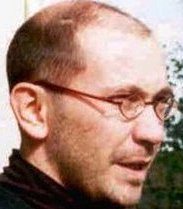Urbanism and the Bakhtinian Chronotope - Towards a Cultural Narratology
 Seminar by Bart Keunen & Sofie Verraest
Seminar by Bart Keunen & Sofie Verraest
Remark: This seminar will be organized twice. Both on 12/07 and 14/07.
Theories and histories of architecture and urbanism tend to deal with the eventual designs or realizations of buildings, rather than with the generative process preceding these. But the (un)built environment is as much a product of human imagination as, say, the plastic arts, literature, photography and film are. Surely, much is to be learned from this underexposed facet of urbanism. It is no accident that the field of urban studies, which has been a cross-disciplinary one from the outset, more easily allows for tying up urban projects with the history of ideas. It is within this framework that the present course will seek to inquire into the perceptions and conceptions (designs) of the urban environment.
We intend to shift the focus away from casuistic description of works and styles of architecture, and shed light on broader tendencies of human imagination as distinguished in anthropology and cultural history. Of particular importance will be the pre-conscious facet of imagination. As Jerome Bruner (1986) has pointed out, another mode of thought besides the logico-deductive one should be highlighted, and that is a narrative kind of thinking. Whereas we tend to overplay the former, the latter is of a more spontaneous nature and, precisely because of this pre-conscious aspect, can teach us much about some deep-seated, but often neglected, tendencies in western thinking that have lived through the ages. As such, narratology may offer a key for unlocking some of the mysteries of our spontaneous imagination, and the way it colors observers' perceptions and architects' conceptions of urban spaces.
 More specifically, it allows us to embark upon "the ways in which narrative forms function as an active cognitive force in their own right and [are] involved in the actual generation of attitudes, discourses, ideologies, values, and ways of thinking." It is in these terms that Ansgar Nünning (2009) spells out a new narratological project, which he variously denominates a "contextual," "historical," or "cultural narratology." It is to the latter term that this course particularly relates, seeking to lay bare "the cultural functions of narratives as crucial ways of world-making." Drawing a lesson from literary theory, we can begin to see how characteristic storylines that have continuously resurfaced in the history of western literature, actually constitute real patterns of thought which have also marked other cultural spheres, including architecture and urbanism.
More specifically, it allows us to embark upon "the ways in which narrative forms function as an active cognitive force in their own right and [are] involved in the actual generation of attitudes, discourses, ideologies, values, and ways of thinking." It is in these terms that Ansgar Nünning (2009) spells out a new narratological project, which he variously denominates a "contextual," "historical," or "cultural narratology." It is to the latter term that this course particularly relates, seeking to lay bare "the cultural functions of narratives as crucial ways of world-making." Drawing a lesson from literary theory, we can begin to see how characteristic storylines that have continuously resurfaced in the history of western literature, actually constitute real patterns of thought which have also marked other cultural spheres, including architecture and urbanism.Core concept to this narratological endeavor will be Mikhail Bakhtin's notion of the "chronotope," (1937-1938) defined as the spatiotemporal frameworks by which the mental images of our imagination are formed. More than merely constructing a set of buildings, urbanists often seek to build societies. Their value-laden preconceptions about man, society, and the world imply particular views on space and time, which co-determine the shape of the cities they imagine. The present course seeks to expose how some of these building blocks of narrative thought - chronotopes - have left their stamp on urban perception and design over the past centuries. With this in view, we will discuss stereotypical images in the art of painting, as well as photography of urban(izing) spaces, and urban projects ranging from Le Corbusier and F.L. Wright, to New Urbanism, and the designs of a post-Kyoto Paris developed for the French International Atelier (2009, chaired by the president Sarkozy).




